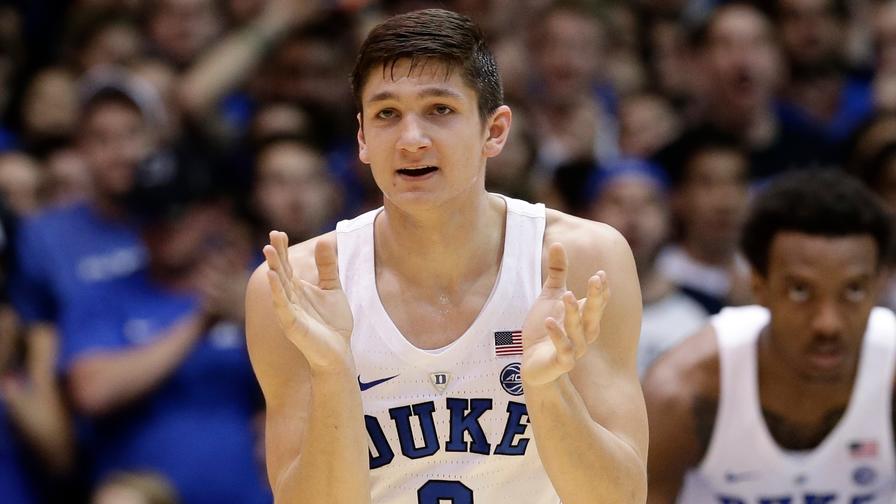What Are the Optimal Teams for FanDuel's Bracket Pick'em in 2018?

In FanDuel's Bracket Pick'em contest, you've got an incentive to be different. The top-scoring lineup gets a cool $5,000, and if nobody else has that score, you get the pot all to yourself. You want that cheddar.
But at the same time, it can't hurt to get a little nudge in the right direction. And numberFire's tools can help give you that.
Want to get a huge leg up on your March Madness pool? Subscribe to numberFire and get instant access to power rankings, bracket picks,
game simulators, and tons of awesome expert advice
to help you make the right decision.
Even better, we're offering our subscriptions at $19 over the first month when you use the promo code BRACKET.
Find Out More
Thanks to all the metrics around the madness, we're able to whip together an optimal grouping of five teams that meet the necessary criteria. We know the sum of the seeds needs to be at least 20, so which teams should we be focusing on this year? Let's check it out.
| Team | Seed | Regional |
|---|---|---|
| Villanova | 1 | East |
| Duke | 2 | Midwest |
| North Carolina | 2 | West |
| Gonzaga | 4 | West |
| Loyola-Chicago | 11 | South |
Again, it pays to be different. And if this is the optimal lineup, there will likely be more than one person rolling it out. But there's still plenty we can learn from this.
The big surprise is clearly the Loyola-Chicago Ramblers, checking in as an 11 seed. But you receive 110 points if they manage to win just one game, and it allows you to avoid middle-tier seeds. There's plenty of incentive to look their direction.
On top of that, Loyola's not a bad team. They enter the tournament ranked 50th in nERD, numberFire's efficiency metric that compares each team to a league-average opponent. The Miami Hurricanes are only 10 spots ahead in 40th. Then it's not a guarantee that Loyola would exit after that, so there's plenty to like here.
But the broader point may be that there's an incentive to plug in one higher-seeded team in order to load up on the teams more likely to make a deep run. Whether that's Loyola, the winner between the Syracuse Orange and Arizona State Sun Devils, or New Mexico State Aggies, picking one of these teams gives you a lot of flexibility. We can learn just as much from the roster construction of the optimal lineup as the teams themselves.
The second-highest seed included is the Gonzaga Bulldogs, a 4 seed in the West. It can be scary to pick a 4 seed because they're in line to face a 1 seed in the Sweet 16, but it's not as daunting as you may think. Gonzaga actually enters the tournament ranked higher in nERD than the 1 seed Xavier Musketeers. Because Gonzaga is a 4 seed, they get four times as many points for each win as a 1 seed. That means if we think they have a shot to make a legit run, we need to get them on our rosters. nERD seems to think this is well within the range of possibilities, making Gonzaga a mighty attractive selection.
Another larger thread we can take away from these optimal pairings is that we want to be sure to avoid loading up on teams within one region. It's true that Gonzaga and the North Carolina Tar Heels are in the same region, but they wouldn't meet until the Elite Eight. You're going to have to double up in one region, so be sure to either have one of the teams be a higher seed that doesn't need to go far to pay off value or pick two teams that would need to make it far in order to face each other.
This optimal lineup is merely a template you can use to help fill out your selections. As mentioned with Loyola, if you've got another 2 seed that you really dig, you can always plug them in the place of the Duke Blue Devils (even though nERD loves it some Duke). But this is at least a starting point to help you on the path toward the 2,500 points you need to net a split of $20,000, so get researching and get those lineups in before Thursday.
















